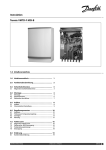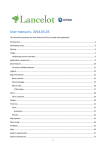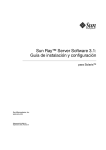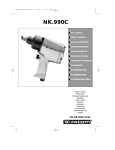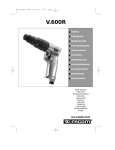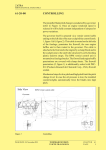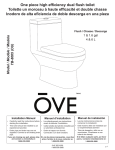Download Danfoss Termix One-B Installation guide
Transcript
Installation Guide Termix One-B 1.0 Table of Contents 1.0 Table of Contents ............................................. 1 2.0 Functional description...................................... 2 3.0 Safety notes..................................................... 3 3.1 Safety Notes – general . . . . . . . . . . . . . . . . . . . . . . . . . . . . . . . . . . . . . . . . . . . . 3 4.0 Mounting ........................................................ 4 4.1 Mounting . . . . . . . . . . . . . . . . . . . . . . . . . . . . . . . . . . . . . . . . . . . . . . . . . . . . . . . . . . . 4 5.0 Design............................................................. 6 5.1 5.2 Design . . . . . . . . . . . . . . . . . . . . . . . . . . . . . . . . . . . . . . . . . . . . . . . . . . . . . . . . . . . . . . . 6 Schematic diagram . . . . . . . . . . . . . . . . . . . . . . . . . . . . . . . . . . . . . . . . . . . . . . . . 7 6.0 Controls .......................................................... 9 6.1 6.2 DHW temperature control. . . . . . . . . . . . . . . . . . . . . . . . . . . . . . . . . . . . . . . . 9 Maintenance. . . . . . . . . . . . . . . . . . . . . . . . . . . . . . . . . . . . . . . . . . . . . . . . . . . . . . . . 10 7.0 Troubleshooting .............................................. 11 7.1 7.2 7.3 Troubleshooting in general . . . . . . . . . . . . . . . . . . . . . . . . . . . . . . . . . . . . . . 11 Troubleshooting DHW . . . . . . . . . . . . . . . . . . . . . . . . . . . . . . . . . . . . . . . . . . . . 11 Disposal . . . . . . . . . . . . . . . . . . . . . . . . . . . . . . . . . . . . . . . . . . . . . . . . . . . . . . . . . . . . . 12 8.0 Declaration...................................................... 15 8.1 Declaration of conformity . . . . . . . . . . . . . . . . . . . . . . . . . . . . . . . . . . . . . . . . 15 Danfoss Heating VI.CW.J3.02 / LUK38000 DEN-GT 1 Installation Guide Termix One-B 2.0 Functional description Instantaneous water heater with heat exchanger and thermostatic control. Designed for wallmounting. Application The Termix One is an instantaneous water heater featuring superb heat extraction and high performance. The Termix One is suitable for flats, single-family houses as well as for small apartment buildings with up to 10 apartments. The water heater is available in three sizes, either for 1 apartment, for 1‑4 apartments or for 5 up to 10 apartments. The Termix One is applicable for decentralized heating systems – as well as for district heating networks with summer operation at low temperatures or changes in differential pressure. The Termix One heat exchanger cools out the district heating water very efficiently, thereby creating a very good operation economy. Domestic hot water (DHW) The domestic hot water is prepared in the heat exchanger and the temperature is regulated with a thermostatic control valve. The patented sensor accelerator accelerates the closing of the Danfoss AVTB valve and protects the heat exchanger against overheating and lime scale formation. The sensor accelerator and AVTB valve also works as a bypass keeping the house supply line warm. This shortens the waiting periods during summer when the heating system is in reduced operation. The sensor accelerator helps to ensure a stable hot water temperature by varying loads, flow temperatures and differential pressure without the need for readjusting the valve. There is no additional pressure loss on the secondary side of the DHW heat exchanger with a thermostatic control. Therefore this type of regulation can be used by low pressure on the in the cold water mains. 2 DEN-GT VI.CW.J3.02 / LUK38000 Danfoss Heating Installation Guide Termix One-B 3.0 Safety notes 3.1 Safety Notes – general The following instructions refer to the standard design of substation. Special versions of substations are available on request. This operating manual should be read carefully before installation and start-up of the substation. The manufacturer accepts no liability for damage or faults that result from non-compliance with the operating manual. Please read and follow all the instructions carefully to prevent accidents, injury and damage to property. Assembly, start-up and maintenance work must be performed by qualified and authorized personnel only. Please comply with the instructions issued by the system manufacturer or system operator. Corrosion protection All pipes and components are made of stainless steel and brass. The maximum chloride compounds of the flow medium should not be higher than 150 mg/l. The risk of equipment corrosion increases considerably if the recommended level of permissible chloride compounds is exceeded. Energy source The substation is designed for district heating as the primary source of energy. However, also other energy sources can be used where the operating conditions allow it and always are comparable to district heating. Application The substation is designed to be connected to the house installation in a frost-free room, where the temperature does not exceed 50 °C and the humidity does not exceed 60%. Do not cover or wall up the substation or in any other way block the entrance to the station. Authorized personnel only Assembly, start-up and maintenance work must be performed by qualified and authorized personnel only. Please observe instructions carefully To avoid injury to persons and damage to the device, it is absolutely necessary to read and observe these instructions carefully. Warning of high pressure and temperature Be aware of the installation’s permissible system pressure and temperature. The maximum temperature of the flow medium in the substation is 120 °C. The maximum operating pressure of the substation is 10 bar. PN 16 versions are available on enquiry. The risk of persons being injured and equipment damaged increases considerably if the recommended permissible operating parameters are exceeded. The substation installation must be equipped with safety valves, however, always in accordance with local regulations. Choice of material Choice of materials always in compliance with local legislation. Safety valve(s) We recommend mounting of safety valve(s), however, always in compliance with local regulations. Connection The substation must be equipped with features that ensure that the substation can be separated from all energy sources (also power supply). Warning of hot surface The substation has got hot surfaces, which can cause skin burns. Please be extremely cautious in close proximity to the substation. Power failure can result in the motor valves being stuck in open position. The surfaces of the substation can get hot, which can cause skin burns. The ball valves on district heating supply and return should be closed. Emergency In case of danger or accidents - fire, leaks or other dangerous circumstances - interrupt all energy sources to the station if possible, and seek expert help. In case of discoloured or bad-smelling domestic hot water, close all shut-off valves on the substation, inform the operating personnel and call for expert help immediately. Warning of transport damage Before substation installation, please make sure that the substation has not been damaged during transport. Storage Any storage of the substation which may be necessary prior to installation should be in conditions which are dry and heated. IMPORTANT - Tightening of connections Due to vibrations during transport all flange connections, screw joints and electrical clamp and screw connections must be checked and tightened before water is added to the system. After water has been added to the system and the system has been put into operation, re-tighten ALL connections. Danfoss Heating VI.CW.J3.02 / LUK38000 DEN-GT 3 Installation Guide Termix One-B 4.0 Mounting 4.1 Mounting Installation must be in compliance with local standards and regulations. District heating (DH) - In the following sections, DH refers to the heat source which supplies the substations. A variety of energy sources, such as oil, gas or solar power, could be used as the primary supply to Danfoss substations. For the sake of simplicity, DH can be taken to mean the primary supply. Authorized personnel only Assembly, start-up and maintenance work must be performed by qualified and authorized personnel only. Connections: 1. Domestic cold water (DCW) 2. Domestic hot water (DHW) 3. District heating (DH) supply 4. District heating (DH) return Connection sizes: DH: DCW + DHW: G ¾” (int. thread) G ¾” (int. thread) The pipe placement can deviate from the shown drawing. Please note the markings on the station. Dimensions (mm): Type 1 + 2 without cover: H 428 x W 312 x D 155 Type 1 + 2 with cover: H 430 x W 315 x D 165 Type 3 without cover: H 468 x W 312 x D 155 Type 3 with cover: H 470 x W 315 x D 165 Weight (approx.): 10 – 12 kg 4 DEN-GT VI.CW.J3.02 / LUK38000 Danfoss Heating Installation Guide Termix One-B 4.1.1 Installation Mounting: Adequate space Please allow adequate space around the substation for mounting and maintenance purposes. Orientation The station must be mounted so that components, keyholes and labels are placed correctly. If you wish to mount the station differently please contact your supplier. Drillings Where substations are to be wall-mounted, drillings are provided in the back mounting plate. Floor mounted units have support. Keyhole for mounting. Labelling Each connection on the substation is labelled. Before installation: Clean and rinse Prior to installation, all substation pipes and connections should be cleaned and rinsed. Thightening Due to vibration during transport, all substation connections must be checked and tightened before installation. Unused connections Unused connections and shut-off valves must be sealed with a plug. Should the plugs require removal, this must only be done by an authorized service technician. Installation: Strainer If a strainer is supplied with the station it must be fitted according to schematic diagram. Please note that the strainer may be supplied loose. Connections Internal installation and district heating pipes connections must be made using threaded, flanged or welded connections. Danfoss Heating VI.CW.J3.02 / LUK38000 DEN-GT 5 Installation Guide Termix One-B 5.0 Design 5.1 Design Your substation might look different than the substation shown. Design description B Heat exchanger, DHW O Termix sensor accelerator 7 Thermostatic controller, DHW 6 DEN-GT VI.CW.J3.02 / LUK38000 Danfoss Heating Installation Guide Termix One-B 5.2 Schematic diagram DH Supply DHW DH Return DCW DH Supply DHW HWC DH Return DCW Your substation might look different than the schematic diagram shown. First diagram: Termix One-B – with GTU. Second diagram: Termix One-B – with safety valve. Schematic description B 2 4 6 Heat exchanger, DHW Single check valve Safety valve Thermostatic/non-return valve DHW: DCW: HWC: DH Supply: DH Return: Danfoss Heating 7 Thermostatic valve 21 To be ordered separately 62 GTU Pressure equalizer Domestic Hot Water Domestic Cold Water Hot Water Circulation District Heating Supply District Heating Return VI.CW.J3.02 / LUK38000 DEN-GT 7 Installation Guide Termix One-B 5.2.1 Technical parameters Technical parameters Nominal pressure: Max. DH supply temperature: Min. DCW static pressure: Brazing material (HEX): Heat exchangers test pressure: Sound level: 8 DEN-GT PN 16 120 °C 0.5 bar Copper 30 bar ≤ 55 dB VI.CW.J3.02 / LUK38000 Danfoss Heating Installation Guide Termix One-B 6.0 Controls 6.1 DHW temperature control DHW temperature control There are various types of DHW temperature control used in Danfoss substations. DHW temperature should be adjusted to 45-50 °C, as this provides optimal utilisation of DH water. At DHW temperatures above 55 °C, the possibility of lime scale deposits increases significantly. 6.1.1 AVTB controller (20–60 °) The temperature setting is as follows: 1 = 20 °C 2 = 35 °C 3 = 50 °C 4 = 60 °C 5 = 70 °C The values are intended as a guide. The AVTB operates at its best at DH supply temperatures of up to 90 °C. Thermostatic control DHW temperature is adjusted as follows: To increase temperature, turn the handle on the thermostatic controller to select a higher number. To decrease temperature, turn the handle on the thermostatic controller to select a lower number. 6.1.2 Safety valve The purpose of the safety valve is to protect the substation from excessive pressure. The blow-off pipe from the safety valve must not be closed. The blow-off pipe outlet should be placed so that it discharges freely and it is possible to observe any dripping from the safety valve. It is recommended to check the operation of safety valves at intervals of 6 months. This is done by turning the valve head in direction indicated. Danfoss Heating VI.CW.J3.02 / LUK38000 DEN-GT 9 Installation Guide Termix One-B 6.1.3 Strainer Strainers should be cleaned regularly by authorized personnel. The frequency of cleaning would depend on operating conditions and the manufacturer’s instructions. 6.1.4 GTU Pressure Equalizer The GTU Pressure Equalizer absorbs the expansion on the secondary side of the Termix water heaters and can be used as a substitute to the safety valve. Furthermore the pressure equalizer absorbs a possible increase in pressure, so a discharge outlet is omitted. The GTU Pressure Equalizer may not be applied in systems with hot water circulation. 6.2 Maintenance The substation requires little monitoring, apart from routine checks. It is recommended to read the energy meter at regular intervals, and to write down the meter readings. Regular inspections of the substation according to this Instruction are recommended, which should include: Authorized personnel only Assembly, start-up and maintenance work must be performed by qualified and authorized personnel only. Strainers Cleaning of strainers. Meters Checking of all operating parameters such as meter readings. Temperatures Checking of all temperatures, such as DH supply temperature and DHW temperature. Connections Checking all connections for leakages. Safety valves The operation of the safety valves should be checked by turning the valve head in the indicated direction. Venting Checking that the system is thoroughly vented. Inspections should be carried out minimum every two years. Spare parts can be ordered from Danfoss. Please ensure that any enquiry includes the substation serial number. 10 DEN-GT VI.CW.J3.02 / LUK38000 Danfoss Heating Installation Guide Termix One-B 7.0 Troubleshooting 7.1 Troubleshooting in general In the event of operating disturbances, the following basic features should be checked before carrying out actual troubleshooting: • the substation is connected to electricity, • the strainer on the DH supply pipe is clean, • the supply temperature of the DH is at the normal level (summer, at least 60 °C - winter, at least 70 °C), • the differential pressure is equal to or higher than the normal (local) differential pressure in the DH network – if in doubt, ask the DH plant supervisor, • pressure on the system - check the HE pressure gauge. Authorized personnel only Assembly, start-up and maintenance work must be performed by qualified and authorized personnel only. 7.2 Troubleshooting DHW Problem Possible cause Solution Too little or no DHW. Strainer in supply or return line clogged. Clean strainer(s). DHW circulation pump out of order or with too low setting. Check circulation pump. Defective or clogged non-return valve. Replace – clean. No electricity. Check. Wrong setting of automatic controls, if any. To adjust an electronic controller for DHW, pls. note enclosed instructions for electronic controller. Scaling of the plate heat exchanger. Replace – rinse out. Defective motorized valve. Check (use manual function) – replace. Defective temperature sensors. Check – replace. Defective controller. Check – replace. DCW is being mixed with the DHW, e.g. in a defective thermostatic mixing valve. Check – replace. Defective or clogged non-return valve on circulation valve. Replace – clean. Tap temperature too high; DHW tap load too high. Thermostatic valve adjusted to a too high level. Check – set. Temperature drop during tapping. Scaling of the plate heat exchanger. Replace – rinse out. Larger DHW flow than the substation has been designed for. Reduce DHW flow. Temperature difference between DH supply and DHW set point too low. Lower the set point temperature or increase the DH supply temperature. Hot water in some taps but not in all. Thermostatic control valve does not close Danfoss Heating VI.CW.J3.02 / LUK38000 DEN-GT 11 Installation Guide Termix One-B 7.3 Disposal Disposal This product should be dismantled and its components sorted, if possible, in various groups before recycling or disposal. Always follow the local disposal regulations. 12 DEN-GT VI.CW.J3.02 / LUK38000 Danfoss Heating Installation Guide Danfoss Heating Termix One-B VI.CW.J3.02 / LUK38000 DEN-GT 13 Installation Guide 14 DEN-GT Termix One-B VI.CW.J3.02 / LUK38000 Danfoss Heating Installation Guide Termix One-B 8.0 Declaration 8.1 Declaration of conformity 8.1.1 Category 0 without electrical equipment EC – Declaration of Conformity Gemina Termix A/S Member of the Danfoss Group Navervej 15-17 DK-7451 Sunds Declares on our sole responsibility that the below products: Substations – Category 0 without electrical equipment, covered by this declaration are in conformity with the following directives, standards and other normative documents, provided that they are used according to our instructions. Machinery Directive 2006/42/EC DS/EN 60204-1/A1:2009. Safety of machinery – Part 1 – General Requirements. DS/EN 12100:2011. Safety of machinery – Risk assessment. Sunds – 2013.03.15 Place and date of issue Danfoss Heating Claus Gjøderum Mortensen Quality & Environment Manager VI.CW.J3.02 / LUK38000 DEN-GT 15 Installation Guide Termix One-B Produced by Danfoss A/S © 11/2013
















